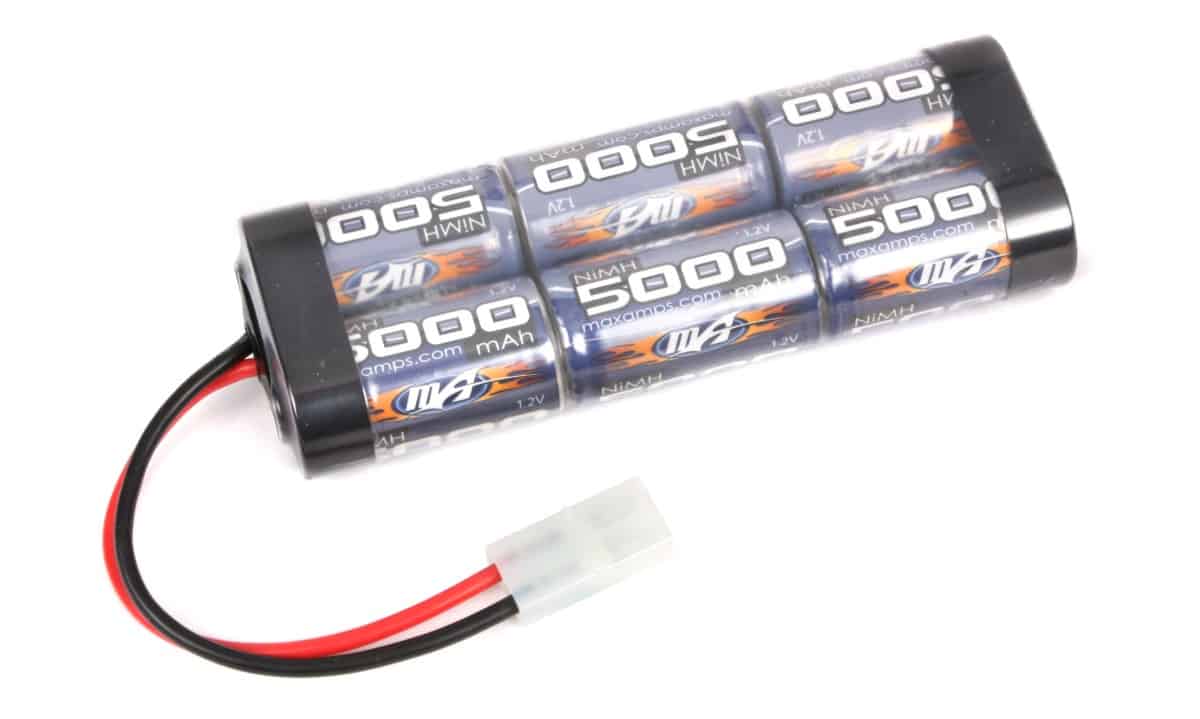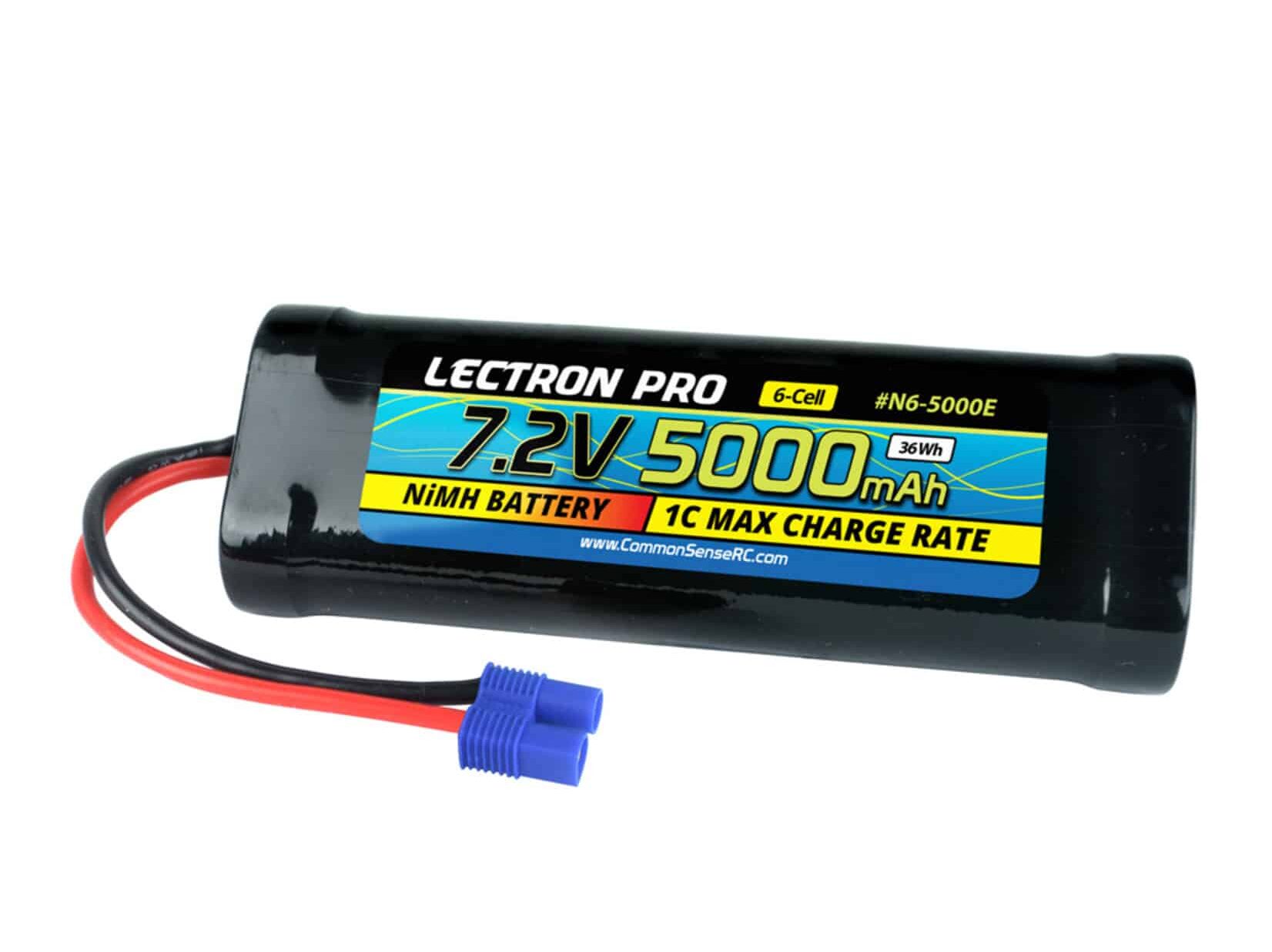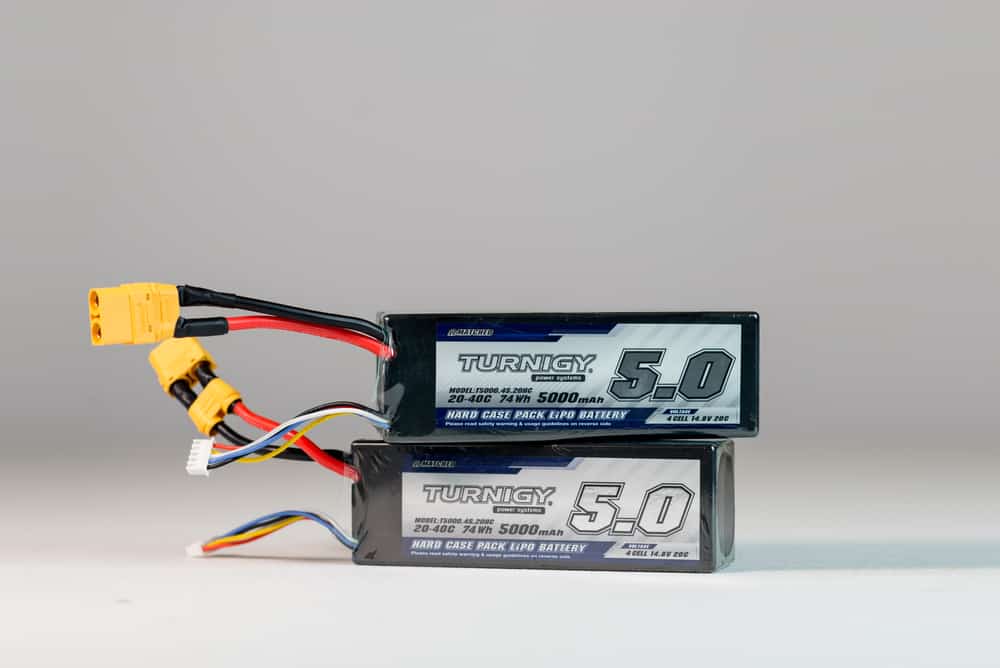Using a rechargeable RC NiMH battery is a great way to both save money on constantly having to buy new batteries and be environmentally responsible by not throwing one battery pack after another in the constantly-growing landfills all around us.
But what is the best practice regarding RC NiMH batteries? What kind of battery charger do you need? Should you go for the “trickle charge” approach or is overcharging beyond the battery capacity the way to go?
When researching online you will stumble on all sorts of myths, misconceptions, and other nonsense. So, let’s give you a proper RC NiMH battery charging guide here plus some extra tips and tricks.
Table of Contents
What is an RC NiMH battery?
A rechargeable nickel metal hydride battery or an RC NiMH battery, for short, is one of the more popular as well as best types of batteries alongside LiPo batteries (Lithium Polymer) and other nickel-based batteries such as NiCd batteries (Nickel-Cadmium).
NiMH batteries are seen as safer than LiPo batteries in terms of explosion risk but that doesn’t mean you shouldn’t be careful when you recharge a NiMH battery. But what exactly makes NiMH rechargeable batteries special?
As the name suggests, NiMH batteries are made out of two metal strips – one nickel and one metal hydride – that function as the positive and negative electrodes of the battery.
The two strips are insulated from one another and placed in the battery canister that’s also filled with electrolyte liquid that facilitates the necessary chemistry for an electrical reaction. Nickel typically acts as the positive electrode while the metal hydride is the negative.
How to avoid voltage depression?
The first two things you’ll probably read when you start browsing online are terms such as “voltage depression” and “memory effect”. Depending on what you’re reading, those two can sound like devastating issues that plague every battery owner and lead to countless battery failures.
That’s not exactly, the case, however. For starters, NiMH batteries don’t have a “memory effect” – NiCd batteries do, not NiMHs. As for the voltage depression issue, that can happen to RC NiMH batteries but it’s not all that common and it’s easily avoidable. Here’s what you need to know about it.
How does it happen?
When a rechargeable battery is repeatedly overcharged, the two metal electrodes can start getting covered by small rigid crystals from the electrolyte liquid. That’s not dangerous to the battery’s health but it can start to inhibit the chemical reaction inside the battery and lower its overall volts.
That drop won’t technically affect the battery’s capacity but it will make it seem like it has less charge. So, the devices you’re powering with the battery will behave as if the battery had a low charge rate or there was an issue with its connectors.
What to do?

Naturally, when this happens, you can exactly reach inside the battery and clean the crystals off the electrodes. So, prevention is the name of the game here. The basic advice is to discharge the batteries completely before you get them back to full charge. There are two problems with this tip, however:
- This means using batteries that are low on power for a while which can be annoying or impractical with certain devices
- You also risk running into another problem – battery pole reversal – which can happen if you over-discharge your batteries. Most modern devices are smart and protect their batteries from pole reversal but basic devices such as flashlights don’t have such fail safes.
So, the way to avoid both the pole reversal and voltage depression issues is to fully discharge your NiMH batteries but only in specific devices, and to then NiMH charge them properly.
How to properly use a NiMN charger?
As with any other electronic device, the first rule is to always follow the instructions in the device’s manual to the letter. With that out of the way, let’s go over a quick step-by-step guide for charging your batteries:
1. Use a smart charger for all your RC NiMH batteries
Such a charger is able to monitor the condition and charging progress of your batteries, has a timer, prevents overcharging, and even uses less power than most other basic chargers. What’s more, quality smart chargers aren’t as overpriced as they once were so there’s no reason not to get one.
2. Don’t trickle charge but don’t overcharge either
The maximum capacity of any NiMH battery is 120% and you should never charge them above that. If you don’t have a smart charger with a timer, make sure you time the charging time of your batteries appropriately.
The reverse problem is trickle charging – charging your battery too slowly or trickle charging at a rate lower than 0.5A. There are moments and situations in which that’s acceptable – we’ll mention them below – but, in principle, your battery should be charged at the appropriate pace for its capacity.
3. Don’t fast charge your batteries either
Every battery has a maximum current limit it shouldn’t go over – in most cases that’s the battery capacity divided by 1000. So, for a battery with a 3,000 mAh capacity, the maximum current limit would be 3.0A.
4. Store your batteries properly
We’ll elaborate more on that below but adequate storage at room temperature and at proper humidity levels (~40%) is key for prolonging their lifespan as excessive air humidity and heat can drastically hamper your battery’s condition and longevity.
5. Get quality NiMH batteries in the first place
This should go without saying but quality matters with batteries as with everything else. Good NiMH rechargeable batteries will have a low self-discharge rate and won’t lose almost any power while they are sitting on the shelf, waiting to be used.
6. Consider cell packing if you have the time

A technique that includes trickle charging is “battery cell packing”. The principle here is simple – first, you trickle charge or slow charge your battery at 1A current until the charger says it’s “full”. With slow charging, however, a battery is never really full, so, remove the battery from the charger and let it rest overnight.
Then, plug the battery in the charger again the next day and charge it at full current (1/1000 of its capacity) for a little while – 15 to 20 minutes or until the battery starts getting warm.
This technique “packs” the battery cell and makes sure your recharged batteries are always at full capacity. It’s worth saying that, while some people swear by this method, its actual effectiveness is questionable and many would say that the same result can be achieved if you just put a quality NiMH battery in a quality smart charger at full current for the appropriate amount of time.
How to store NiMH batteries to extend their lifespan?
Proper storage is another key aspect if you want to keep your RC NiMH battery out of the recycling bin for as long as possible. Here are the basics to keep in mind:
1. Maintain proper conditions
When you store your NiMH batteries you need to make sure they are not in direct sunlight, they are kept at room temperature at all times (so, not near heaters or in cabinets near hot water pipes), and the humidity in the storage area isn’t too high (around 40% and not above 50% if you can help it). Obviously, they should also be out of the reach of young children.
2. Recharge your batteries periodically

This doesn’t apply to short storage intervals but if we are talking about multiple months and years, it’s a good idea to check your batteries’ level every once in a while and recharge them if they’ve started to drop below 20%.
The reason is simple – letting batteries stay undercharged for long periods of time is known to slowly decrease their maximum capacity.
3. Consider cycling your batteries occasionally
This is a good tip for really long storage periods such as multiple years. The idea is to slow charge your batteries at 0.5 or 1A to full, then slowly discharge them down to 60% and repeat the process a couple more times.
The idea behind this is to keep the electrolytes inside the battery from settling during long periods of inactivity. So, while slow charging isn’t recommended when actively using the battery, it’s not a bad idea when you need to cycle it to keep it alive.
In conclusion – how to charge RC NiMH batteries?
The simplest way to summarize all of the above is – get a good smart charger and follow its manual as well as the instructions on the battery pack itself. Don’t overcharge your batteries but don’t leave them undercharged either. Discharge them fully when you can but don’t over-discharge them either.
In short – charging your RC NiMH batteries isn’t all that complicated but it should be done properly and with care if you want to prolong their life cycle and use them for many years to come.
